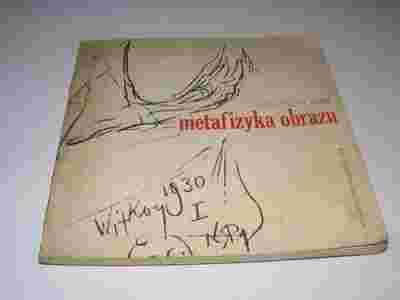METAFIZYKA OBRAZU TEORIA SZTUKI POSTAWA WITKIEWICZ

Aukcja w czasie sprawdzania była zakończona.
Aktualna cena: 50 zł
Użytkownik inkastelacja
numer aukcji: 2041559179
Miejscowość Kraków
Wyświetleń: 8
Koniec: 16-01-2012 20:34:04
